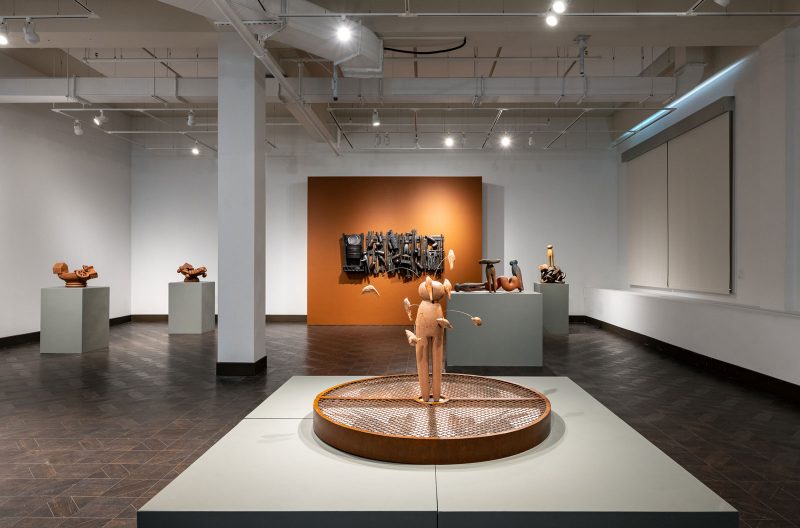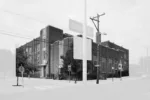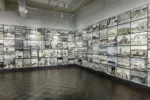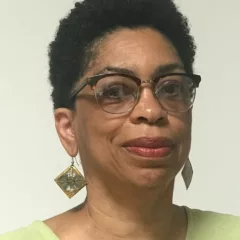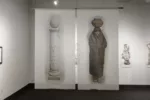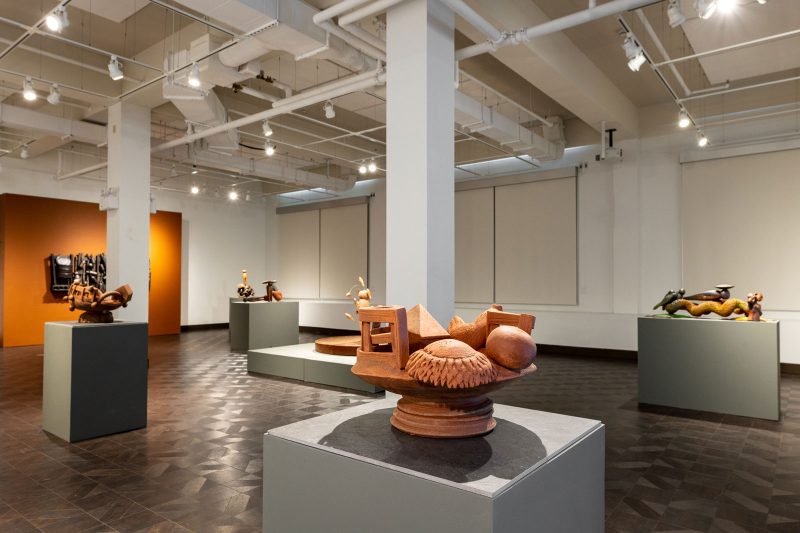
Syd Carpenter’s Earth Offerings: Honoring the Gardeners, on view at the Rowan University Art Gallery through March 26 is a celebration of nurturing in both the personal and cultural sphere. Its two bodies of work, Farm Bowls and Mother Pins, address small, African American farms in the South and the artist’s mother as a figure representative of matriarchal fecundity and strength. She presents both as conduits of African culture as it survives within the African American community. While farm work has come to be associated with the major employment of slavery, Carpenter emphasizes its longer, ancestral history. The beautifully-installed exhibition consists of sixteen stoneware sculptures. Some hang on the walls, others sit on gray plinths arranged with a sculptor’s sensitivity to the gallery’s space.
Carpenter traveled in South Carolina, Georgia, and the Gullah Islands to visit African American family farms and study their traditions, which have received relatively little attention. She responded with a series of seven Farm Bowls (2021), approx. 13 x 21 x 21 in – substantial containers of unglazed clay which would require two hands to carry. The artist sees the bowl as a universal form employed for both practical purposes and ritual and ceremonial functions. Her farm bowls each represent individual farms and are named after the farmers she met. The group reads as commemorative offerings, intended for public presentation. Most of the bowls are partially surrounded by miniature landscape elements: fencing, central areas of land – tilled, smoothed, planted or strewn with stones — and surrounded with barns, farm animals, and produce such as cabbage, sunflowers, eggs, and beans. The bowls are hand-built and retain imprints of the artist’s hands and tools.
The Farm Bowls are remarkable variations on the same, simple form accompanied by both animate and inanimate objects which are arrayed differently on each bowl. All sit on bases at slightly varying angles. They consistently employ the natural color of the clay which the artist chose for its closeness to the color of the land and the skin color of the people that inspired the work. The bowls have been transformed into symbolic landscapes with historical and cultural implications. They are consistent in their monochrome, unglazed surfaces which expose the grit of the clay, and like all good sculpture they tempt viewers to touch, to run one’s hands over the varying surfaces and follow the encircling forms and varied contents. They are impressive as individual works but the group is even more imposing for its variety within a consistent format, scale and language of forms as well as its depiction of specific, individualized farms, hence as a form of documentation.
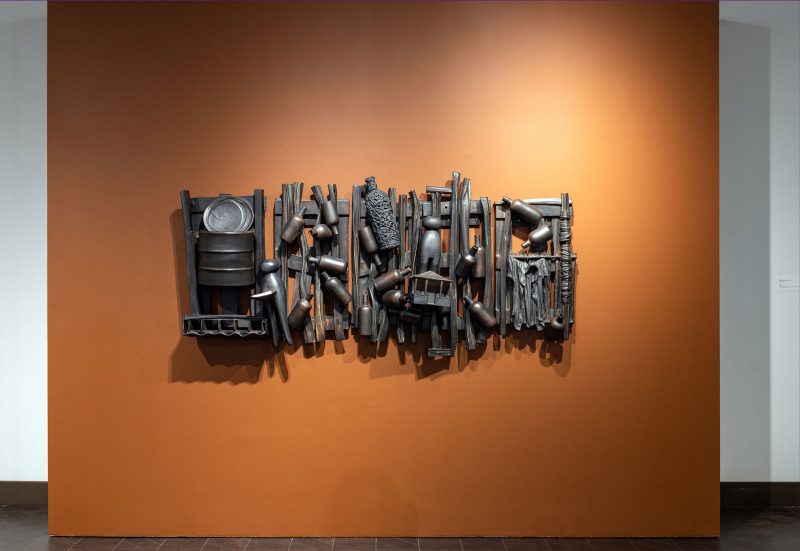
At the center of the back wall hangs the earliest and largest work in the exhibition. “Ramshackle Fence” (2008-2012), 30 x 75 x 9 in., functions as a thematic pivot between the Farm Bowls and the Mother Pins. The ceramic relief represents a range of worn, everyday items that sit in front of and are suspended from the fence, the debris awaiting reuse: bottles, tools, barrels, clothing. An oversized clothespin is nestled among the other objects. The fence itself is missing some of its upright sections and is partially held together with string. The entire relief is a warm, dark brown, the color of some much-handled pennies and has slight color variations that suggest wear from weather and use. It is a still life that acknowledges the dignity and industriousness of the rural poor, but given the quantity of bottles, it may also point to the overuse of alcohol as an escape.
Carpenter uses the old-fashioned clothespin – with round head, bulging stem and vertical cut to hold clothes and line – as a stand-in for the female form in her series of Mother Pins. They are both sensual and mundane and emphasize women — in these works, specifically her mother — as begetter and nurturer. Carpenter’s mother was also a gardener, so her caregiving included physical sustenance and emotional nourishment. Three small Mother Pins (19 to 24 inches tall) hang on the wall, bearing a basket, seeds and a shirt.
Two commanding works, “Mother Pin Arise” (2020), 28 x 19 x 19 in., and “Mother Pin Afire” (2017) 27 x 16 x 12 in., are complex and hint at darker sides to the maternal figure. The upright, clothespin women have bases composed of multiple forms which suggest narratives that are not fully explicated. Both sculptures are painted in a rich and subtle variety of colors which imply varied materials. “Mother Pin Afire” stands upon swirling waves and a mound studded with stones (or possibly beans, a favored produce of Carpenter’s). The fire of the title is evoked by artichoke forms sprouting on the head and shoulders of the clothespin. “Mother Pin Arise” stands upon an entanglement of chains enclosing rolling land, a small house, and a cave-like space surrounding a large, decapitated head, colored to resemble patinated bronze. Two further Mother Pin works, both with highly-textured, snake-like forms among multiple elements, have stunning ranges of textures, coloring, and forms, but are equally puzzling as to their interpretation.
“Release” (2021) 39” x 59 in. diameter, sits on the floor where it takes the form of a garden fountain. It is the most lyrical of the Mother Pin works. A central figure of the clothespin/woman, surrounded by birds suspended on wires, stands in the middle of a round water basin which has been fashioned from a found, metal gate. Large birds are drawn on the floor of the basin which is covered by acrylic, whose reflections mimic that of water. This is the mother who cares for her young then offers them the ultimate gift of freedom to go off on their own.
Syd Carpenter’s “Earth Offerings: Honoring the Gardeners” is on view until March 26, 2022 at Rowan University Art Gallery.
